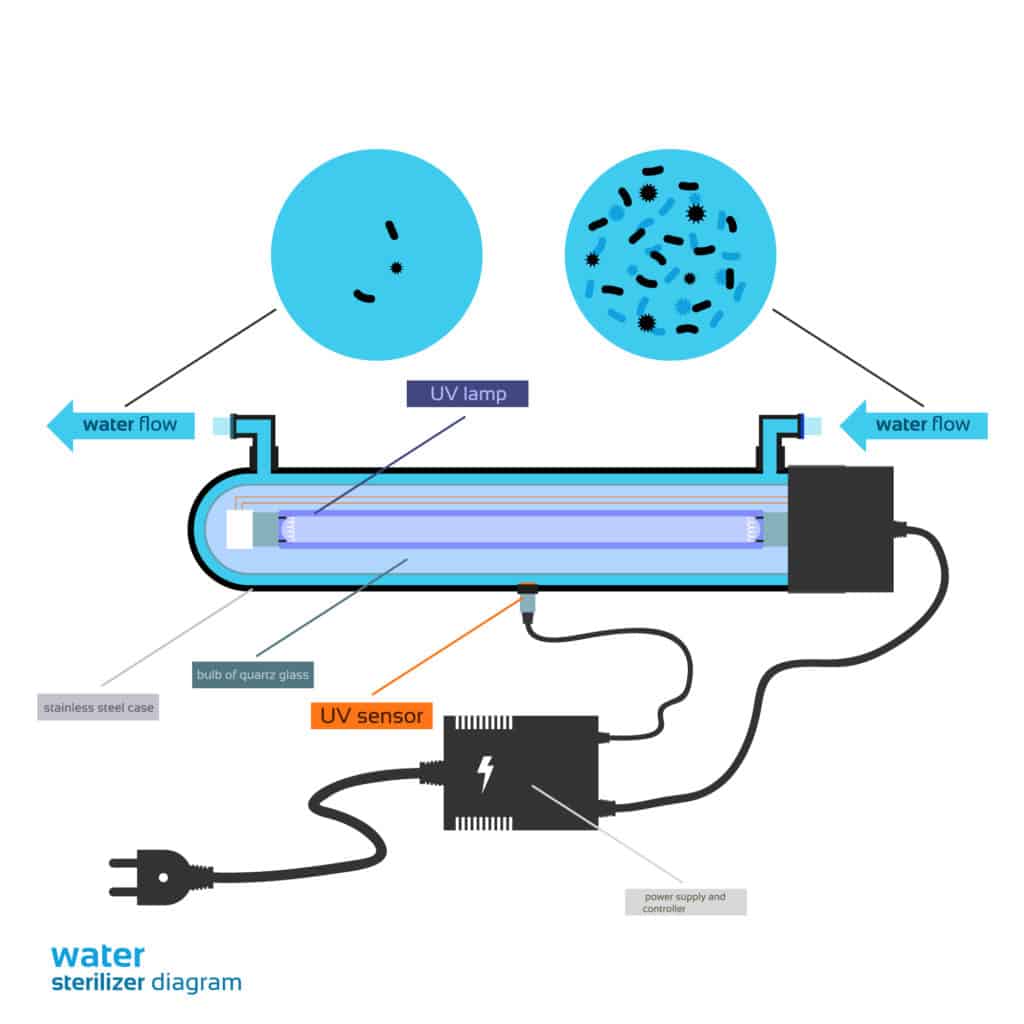
We’ve all heard and read about the benefits of a UV sterilizer for an aquarium’s health.
However, it’s not uncommon to hear amateur hobbyists say that their UV sterilizer system hasn’t helped their tank at all.
This lack of results is because beginners often don’t set up their systems correctly.
In this article, you’ll learn everything you need to know about UV sterilizers and the factors you should consider in order to get the best results.
What Size UV Sterilizer Do I Need?
The size of UV sterilizer you need usually depends on the device’s bulb wattage and flow rate.
To choose the right UV sterilizer size, you should consider your tank size and the pump’s flow rate.
Different microorganisms are able to resist certain radiation intensities.
You will need a lower wattage for killing algae than for parasites.
Each brand can support different water volumes with different wattages and flow rates.
Manufacturers usually include these details on their packaging and in their purchase guides.
Here is an example of size requirements from a manufacturer:
Coralife Turbo Twist UV Sterilizer
Models:
3x (9W) – up to 125 Gallons
6x (18W) – up to 250 Gallons
12x (36W) – up to 500 Gallons
Specifications:
3x (9W) – 100-200 gph – 1/2″ or 5/8″
6x (18W) – 200-400 gph – 5/8″ or 3/4″
12x (36W) – 400-1200 gph – 3/4″ or 1″
Video Guide to Sizing a Uv Sterlizer
What Is a UV Sterilizer?
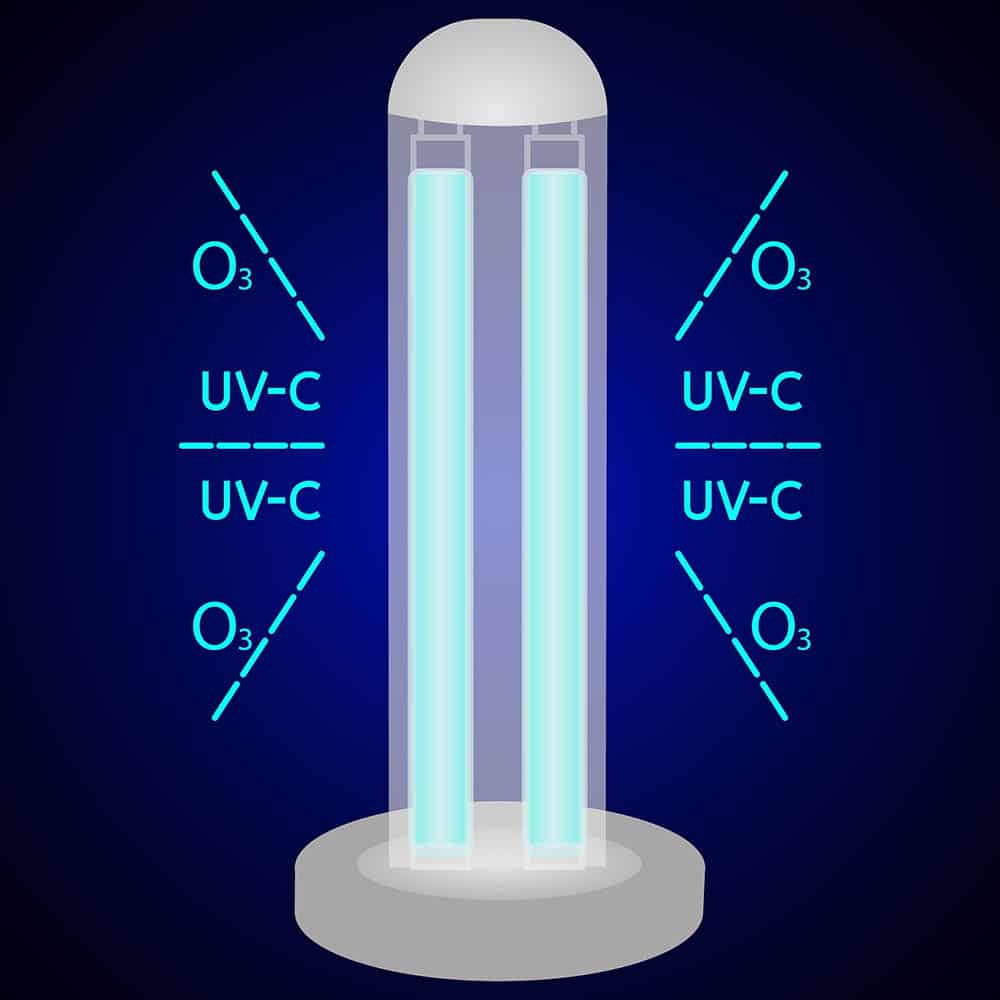
To fully understand the UV sterilizer system’s mechanism, you should know about ultraviolet (UV) light first.
The electromagnetic light frequency consists of seven categories based on wavelength.
The UV light spectrum falls somewhere between visible light and X-rays, with a wavelength of 10–380 nanometers (nm).
This radiation induces alternative negative and positive charges which ionize atoms and severely damage exposed living tissue.
That’s why you get sunburnt if you stay under the sunlight for too long—it contains UV light.
UV light can also disinfect surfaces and sterilize water.
A UV sterilizer consists of two tubes.
The inner tube is crystal clear and contains the UV light bulb inside.
It runs through the bigger tube’s opaque center, which prevents the light from harming the other living organisms in the tank.
The water gets pumped into the bigger tubes and is exposed to high-intensity UV light as it passes the smaller ones.
The radiation will destroy or alter the DNA or the cell membranes of living organisms like bacteria, viruses, parasites, and algae that float in the water.
As a result, the water comes out of the system with fewer pollutants and unwanted living creatures.
This system causes dead algae cells to clump up, so your tank’s mechanical filtration can remove them.
The water may remain green because the dead microalgae are still floating.
You can handle this issue by doing water changes.
What Are the Benefits of a UV Sterilizer?

As mentioned, UV sterilizers can eliminate the population of free-swimming and harmful organisms and pathogens.
Therefore, you can prevent or control an algae bloom, bacterial bloom, or parasite outbreak with a UV sterilizer if its size is appropriate for the tank.
It can kill free-floating parasites like ich and save your fish from getting infected and sick.
High-quality UV sterilizers can lower oxidizers and oxidative stress in an aquarium, thus improving the redox balance.
As a result, the fish will have stronger immune systems and will be less likely to catch diseases.
The great news is that the beneficial nitrifying bacteria aren’t free-floating, and they live in the filter or substrate.
Since they don’t get carried to the UV sterilizer, it can’t hurt or kill them.
UV Sterilizer vs. UV Clarifier

Most people think UV sterilizers and clarifiers are the same.
Although they both have similar structures and emit UV light, their strengths and applications are different.
Unwanted floating microorganisms have different cell structures, so some are stronger than others and can resist UV light for longer.
Algae and some species of bacteria are relatively weak and will die off if exposed to UV light for a short period.
However, parasitic protozoa and many bacteria varieties will need to stay under the radiation for a longer before it affects them.
UV clarifiers have a lower wattage and faster flow rate, so the water passes through them more quickly, and the organisms are exposed to a lesser intensity.
Therefore, a clarifier can only help you control an algae bloom or eliminate the water’s green color.
It will not give you sterilized water.
UV sterilizers, on the other hand, have a higher wattage, and the water goes through them more slowly, giving sturdy parasites and bacteria a more intense UV treatment.
You should install a UV sterilizer system if you want to get rid of tough parasites and bacteria.
What to Consider When Choosing a UV Sterilizer?

1. Size or Bulb Wattage
The term “UV sterilizer size” usually refers to the unit’s bulb wattage.
Bulb wattage is the most important factor to consider when purchasing a UV sterilizer, but it’s not the only one.
The right flow rate is also essential.
First, let’s consider wattage.
UV bulb wattage is an indicator of radiation intensity.
UV sterilizer manufacturers usually specify the bulb wattage on their packaging.
Still, the factor which actually matters most is the UV unit’s output wattage, which is often significantly lower than the bulb wattage.
Most companies don’t reveal the actual output wattage, and you can guess why!
The right wattage for your aquarium mostly depends on two factors: tank size and the intensity of the problem in your tank.
As mentioned, you’ll need stronger radiation for parasites than algae.
Also, the appropriate wattage differs for saltwater tanks, freshwater tanks, and outdoor ponds.
As a rule of thumb, you need 10 watts for every 75 gallons of salt water.
For fresh water, 10 watts per 150 gallons of water volume works well.
Since outdoor ponds get sunlight daily, which is an excellent UV source, you won’t need a strong sterilizer.
Ten watts for every 1,000 gallons of pond water is sufficient.
2. Flow Rate
The water flow rate through a UV sterilizer determines its kill ratio.
If water travels through the system quickly, the algae and bacteria will pass through unaffected.
If it’s too slow, the water will heat up, increase the tank’s temperature, and damage the UV bulb.
Flow rate is usually measured in gallons per hour (GPH).
Your aquarium’s turnover rate is the amount of time you want the fertilizer to filter the water, which should be one hour.
For sterilization, the turnover rate should be one hour, but for clarification of the water, two hours will work.
Most manufacturers indicate the minimum and maximum flow rate for their UV units at different wattages.
3. Water Turbidity
Water turbidity is another critical feature for optimizing the wattage and flow rate.
It includes water pre-filtration.
This parameter doesn’t appear in the product information or formulas.
To ensure that the water is properly filtered before it goes through the sterilizer, install the unit after a mechanical filter.
4. Other Factors
- The tank’s water temperature should be between 68 and 104°F to extend the UV bulb’s effective life.
- The unit diameter should be about two or three inches for optimal contact time.
- The gap between the bulb and the unit’s outer wall shouldn’t be more than 1.5 inches.
- The inner tube or quartz sleeve should be crystal clear and clean.
How to Maintain a UV Sterilizer

Just like the inside of your filter and other pipes, the sterilizer’s tube will get dirty and slimy.
If the inner crystal tube gets covered with dirt, it won’t pass the UV light properly.
Make sure the system is unplugged before you start working.
Clean the bulb with a cloth soaked in vinegar or another mild acid and rinse it with water.
Be careful not to scratch the sleeve with an abrasive material.
Also, you will need to change the UV light bulb after six to 12 months of continuous use because it’ll lose its strength over time.
Tips for Using a UV Sterilizer

- Don’t turn on a UV sterilizer when you’ve just set up the aquarium. Give the free-floating, beneficial bacteria some time to create the nitrogen cycle. Wait until they attach themselves to the filter bio-media or substrate.
- When treating the tank with medication, turn off the UV sterilizer because the radiation can alter the atomic structure and break the chemical molecular bonds.
- If you have a refugium, it’s best not to install the UV sterilizer on its return line. The amphipods and copepods that grow in the refugium find their way back to the main tank through the return pipes. They’re great food sources for the fish, and the UV sterilizer may hurt them.
- Turn the UV unit off when you’re feeding your corals with free-floating organisms so that the radiation won’t kill them.
- It’s best to turn the UV sterilizer off when dosing the tank with plant fertilizers because the UV light may alter their chemical structure.
Frequently Asked Questions

1. How Long Does a UV Sterilizer Take to Work?
Don’t expect the sterilizer to solve the problem immediately.
Sometimes, it takes only a couple of hours for the bacterial or algae bloom to clear away, and sometimes a couple of days.
If you’re dealing with parasites like the ich, it may take a week for the tank to eliminate the infection.
2. Will UV Sterilization Affect My Water Parameters?
UV sterilizers won’t have a direct impact on the water parameters.
It won’t positively or negatively affect the pH, KH, GH, ammonia, nitrate, and nitrite levels.
However, lowering organics in the water may affect the KH levels indirectly.
UV light can also decrease the antibiotics levels.
3. How Do You Know If the Bulb Is Faulty?
Once you buy the UV unit, you should check the light bulb first.
Although UV light isn’t visible, the bulb emits a blue spectrum we can see.
Look for the blue light in the dark.
If you can’t see it, the quartz sleeve or lamp could have been damaged during transportation.
Return the UV sterilizer and get a replacement.
4. How Do You Attach a UV Sterilizer to Your System?
Since there are different UV sterilizer designs out there, there’s no single right way to install the unit.
Some UV sterilizers come with components which let you hang the unit on the aquarium.
Others, known as inline sterilizers, go on the pump’s return line back to the main tank.
Read the manufacturer’s instructions and follow them carefully.

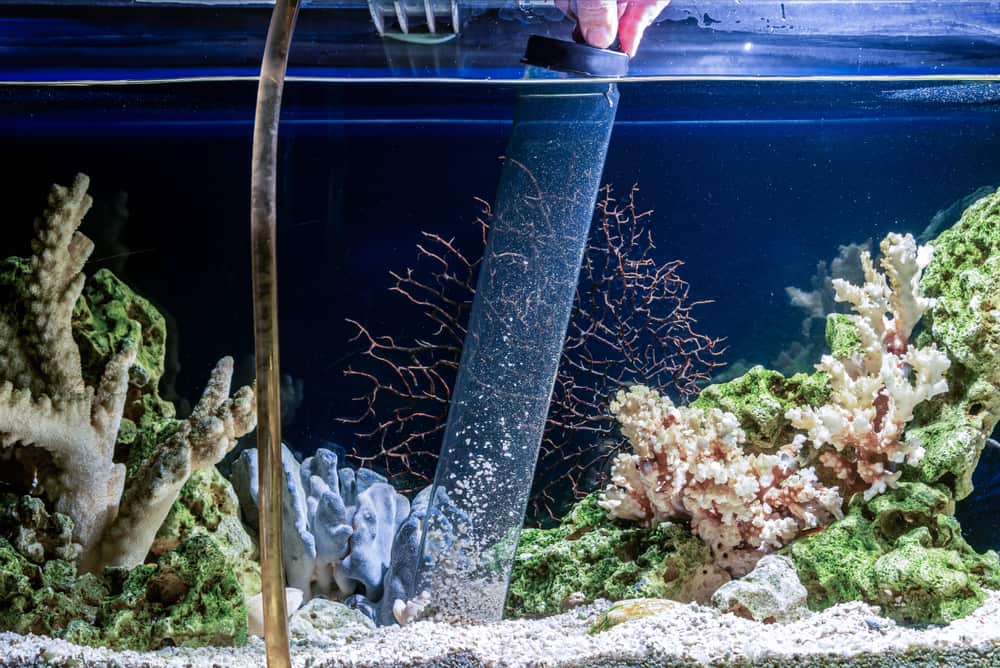
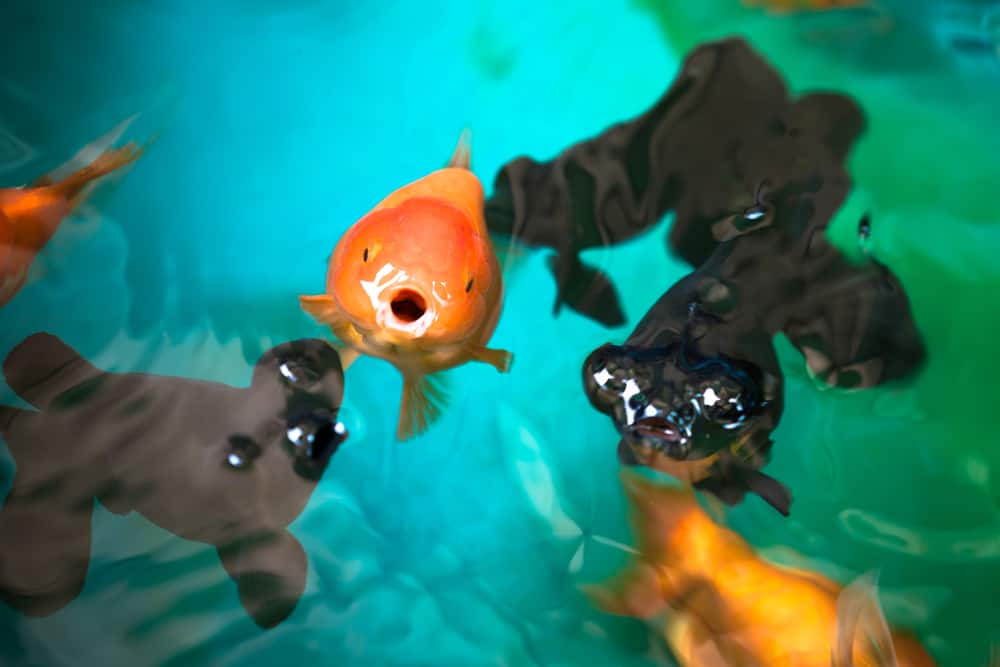
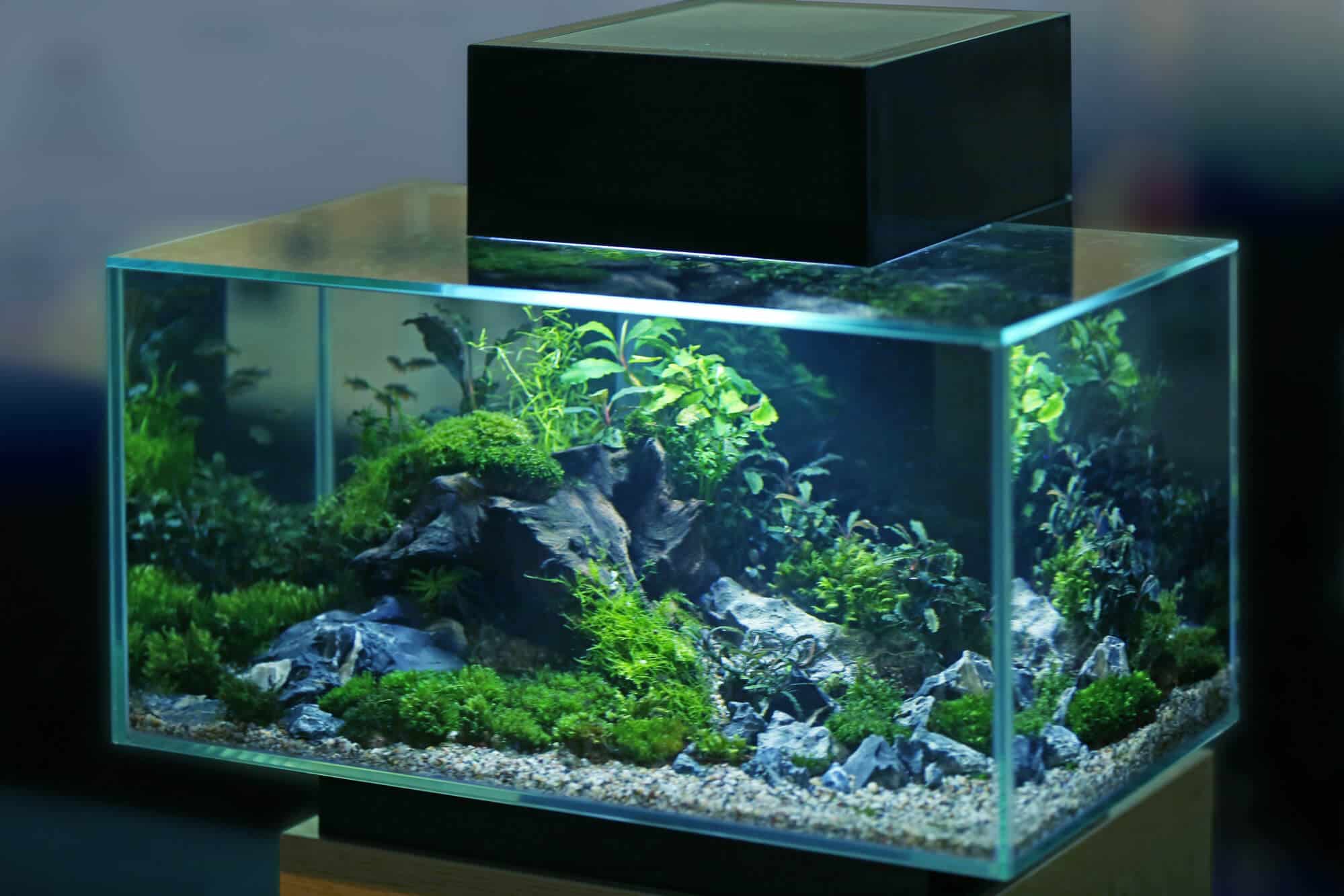
Leave a Reply
You must be logged in to post a comment.